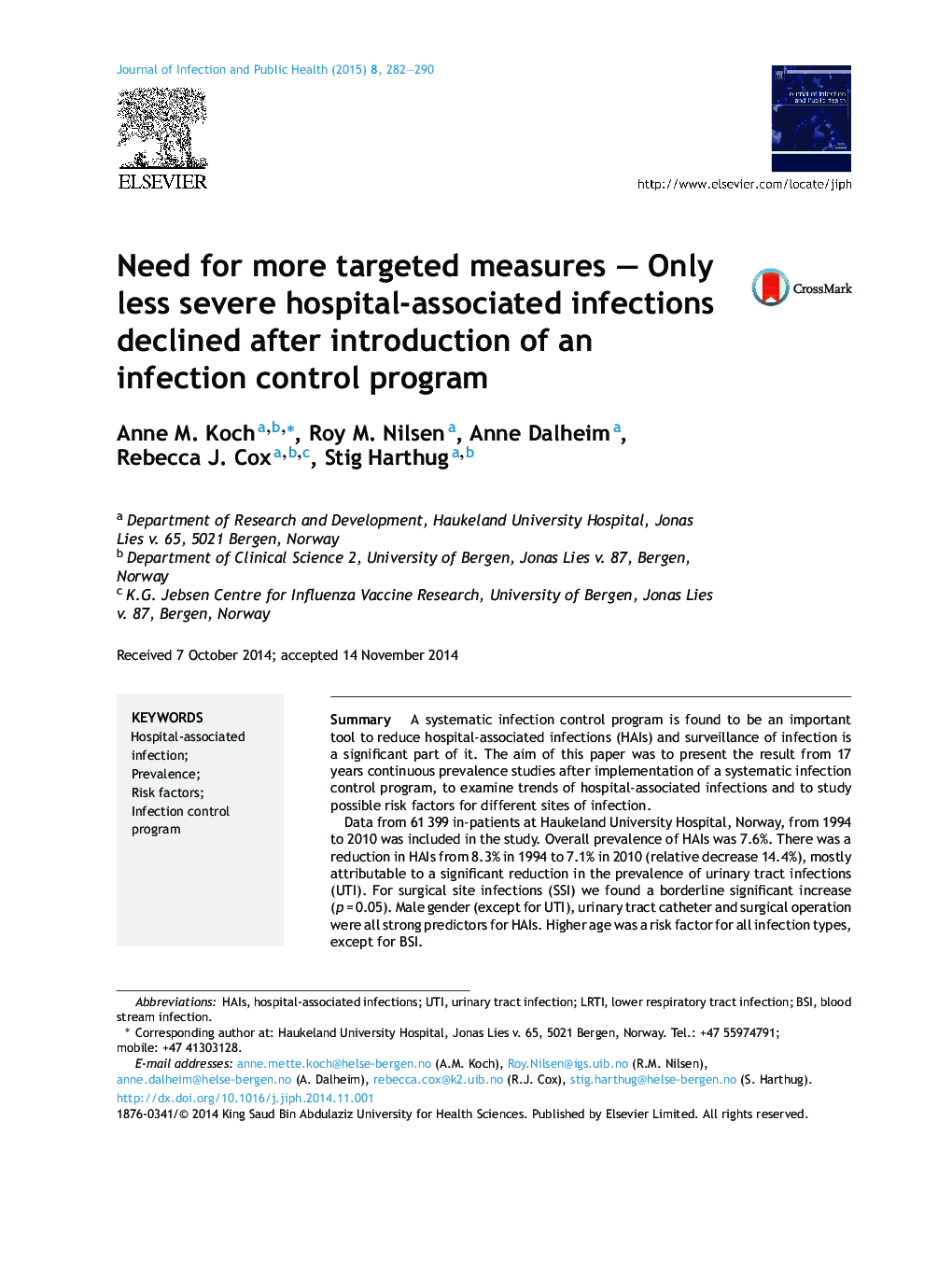| Article ID | Journal | Published Year | Pages | File Type |
|---|---|---|---|---|
| 3405984 | Journal of Infection and Public Health | 2015 | 9 Pages |
SummaryA systematic infection control program is found to be an important tool to reduce hospital-associated infections (HAIs) and surveillance of infection is a significant part of it. The aim of this paper was to present the result from 17 years continuous prevalence studies after implementation of a systematic infection control program, to examine trends of hospital-associated infections and to study possible risk factors for different sites of infection.Data from 61 399 in-patients at Haukeland University Hospital, Norway, from 1994 to 2010 was included in the study. Overall prevalence of HAIs was 7.6%. There was a reduction in HAIs from 8.3% in 1994 to 7.1% in 2010 (relative decrease 14.4%), mostly attributable to a significant reduction in the prevalence of urinary tract infections (UTI). For surgical site infections (SSI) we found a borderline significant increase (p = 0.05). Male gender (except for UTI), urinary tract catheter and surgical operation were all strong predictors for HAIs. Higher age was a risk factor for all infection types, except for BSI.In conclusion, repeated prevalence surveys demonstrated a significant reduction in HAIs but no decrease in hospital-associated BSI, LRTI and SSI. There was, however, a rapid decline of UTI and other less severe HAIs.
